
As much as I love Christmas – the time spent with family and friends, all those smells, and, yes, even "Last Christmas" by Wham! – there is always the thing about the presents. Presents are easy for the kids, especially since there is LEGO Star Wars ![]() , but they're hard for the grown-ups. Don’t we all have everything we want and need?
, but they're hard for the grown-ups. Don’t we all have everything we want and need?
Therefore, in my family, it's become a habit to give money for both birthdays and Christmas. This way, after sum-totaling their various cash gifts, recipients can fulfill larger wishes, like a new bike, hundreds of cutters from De Koekenbakkers (guess whose birthday wish that was . . . ), or the sideboard of their dreams (there I go wishing again!).
What I don’t like about this practice is that it's so impersonal to hand over an envelope with a bill in it. So, this year, I wanted to make it more personal and unique. What could be more obvious than something cookie-based? And, as we are talking about Christmas, a cash-filled cookie stocking became my choice!
- 2 (3 1/2-inch) stocking cookies (from Wilton 101 cookie cutter set)
- 1 (3 1/2-inch) stocking cookie with opening (about 1 x 2 1/3 inches) cut in center
- White royal icing, medium flooding consistency
- Large hard brush
- Pastry bag with #3 round tip or equivalent, for flooding
- Scribe tool
- Red royal icing, medium flooding consistency
- Pastry bag with #2 round tip or equivalent, for flooding and detailing
- Red food color pen (optional)
- Red sanding sugar (made following this tutorial, though you can also use store-bought)
- Small soft brush
- Clear sanding sugar
- Disinfectant wipes
- Money
Start by gluing the cookies together with white icing. The cookie with the cutout part goes in the middle.

Let the cookie dry approximately 30 minutes until all parts are firmly positioned.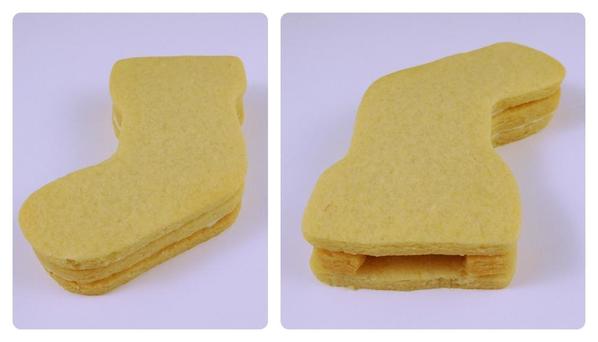 Now, with the help of the large hard brush, coat all sides with the same white icing used for "glue" in the previous step.
Now, with the help of the large hard brush, coat all sides with the same white icing used for "glue" in the previous step.
I painted one layer and let it dry about 30 minutes; then I added a second layer and let it dry as well.
Next, using a pastry bag fitted with a #3 round tip (or equivalent), flood the top of the cookie, leaving the heel, toe, and cuff empty for now. Use the scribe tool to help shape the icing and to move it right to the edges to meet the sides as seamlessly as possible. Let the icing dry another 30 minutes or so.
Following the same method used for brushing the sides with white icing, brush red icing on the sides, directly under the open areas at the heel and toe.
Again, allow some drying time before you flood the toe and heel with the same red icing. For this step, use a pastry bag, of course. (To make it easier to get into these relatively small spaces, I used a bag with a #2 round tip this time.) Let everything dry thoroughly, at least a couple of hours, though ideally overnight.
Now it's time to add the little poinsettia decorations. I am not that good at freehand-piping, which is why I roughly marked out the petals with a red food color pen. Very roughly, indeed. I didn’t even get them spaced uniformly - *sigh*. Of course, you can skip the sketching step, and pipe the petals freehand if you feel confident enough.
Fill out every other petal, again using the red icing and a pastry bag fitted with a #2 tip (or equivalent). Shape the petals with your scribe tool too.
Before the icing crusts, cover the petals with red sanding sugar. If necessary, reshape the petals. Have a large mug of hot chocolate to fill another drying period - 20 minutes should be enough, as these parts are very small.
Gently remove any excess sanding sugar with a small soft brush. Unfortunately, homemade sanding sugar is never completely colorfast, and so I created some red smears when I dusted it off. If you use store-bought sugar, smearing should not be a problem.
Add the remaining petals in the same fashion, and let everything dry thoroughly.
Last, but not least, use the same white icing as before to pipe uneven, messy lines on the cuff. Be sure to cover the cuff sides and the exposed cookie around the opening - just don't fill the opening!
Immediately dip the wet area in clear sanding sugar - or sprinkle on the sugar, if you prefer - to create a glittery woolen cuff. Guess what comes next? A little more drying time - this time, at least two hours! [EDITOR'S NOTE: For projects like this one with multiple drying steps, it can be helpful to have a food dehydrator to accelerate drying time. Or to have a large stash of hot chocolate! ![]() ]
]
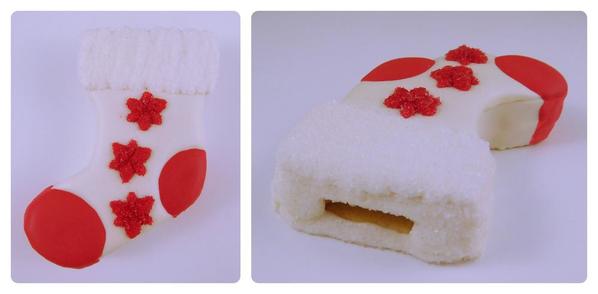 Now, the cookie is ready and waiting to be filled with cash.
Now, the cookie is ready and waiting to be filled with cash.
Before you go and fill the cookie, I would like to point out that money is dirty. And I mean this literally! It would be more hygienic to lick a toilet bowl than a bill, honestly. So, if you believe that the recipient might actually eat the cookie, you will either have to wrap the money in plastic wrap, which looks kind of silly, or you will have to thoroughly clean it. I used disinfectant wipes for this purpose. Don’t worry, wipes will not harm the bill - at least not Euro bills. I won’t give a guarantee for other currencies, however! It might be best to try the wipes at the corner of a bill before you give it a thorough disinfecting.
Fold up the bill until it fits the opening, insert it, and that’s it.
Along these lines, have a very cashy Christmas! 




 Leoni Eckart, aka Laegwen, started her baking career way before her own memory sets in, decorating Christmas cookies with her mother (at least that's what she's been told!), and has never entirely stopped puttering around in the kitchen since. Her first decorated cookies as an adult were her own wedding favors, and then, over Christmas 2014, her cookie fever went into overdrive! As of present, it shows no signs of cooling off. You can find Leoni on Facebook here, or you can reach her by email at laegwen@outlook.de.
Leoni Eckart, aka Laegwen, started her baking career way before her own memory sets in, decorating Christmas cookies with her mother (at least that's what she's been told!), and has never entirely stopped puttering around in the kitchen since. Her first decorated cookies as an adult were her own wedding favors, and then, over Christmas 2014, her cookie fever went into overdrive! As of present, it shows no signs of cooling off. You can find Leoni on Facebook here, or you can reach her by email at laegwen@outlook.de.
Photo credit: Leoni Eckart
Note: Get Inspired with Laegwen is a bimonthly series of cookie decorating tutorials that follow Leoni Eckart's personal experiments with gumpaste, royal icing, and other cookie decorating materials and methods. This article expresses the views of the author, and not necessarily those of this site, its owners, its administrators, or its employees. To read all of Leoni's past Get Inspired tutorials, click here. And to catch all of our Cookie Connection tutorials, click here.


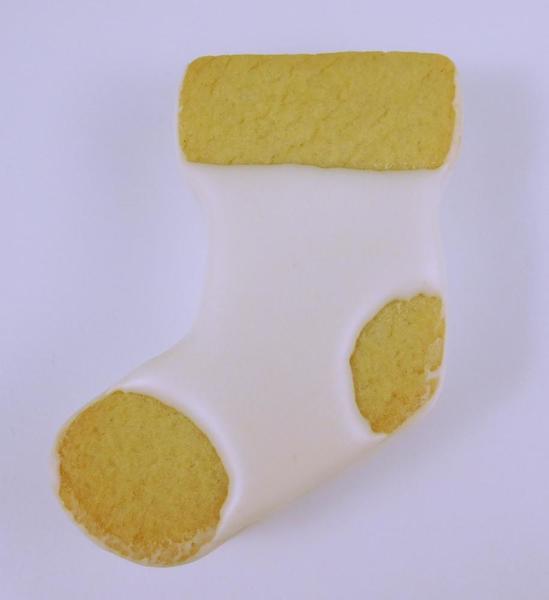
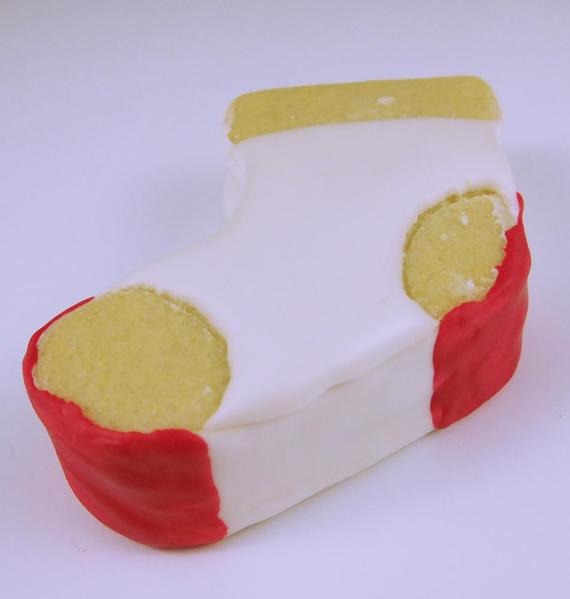

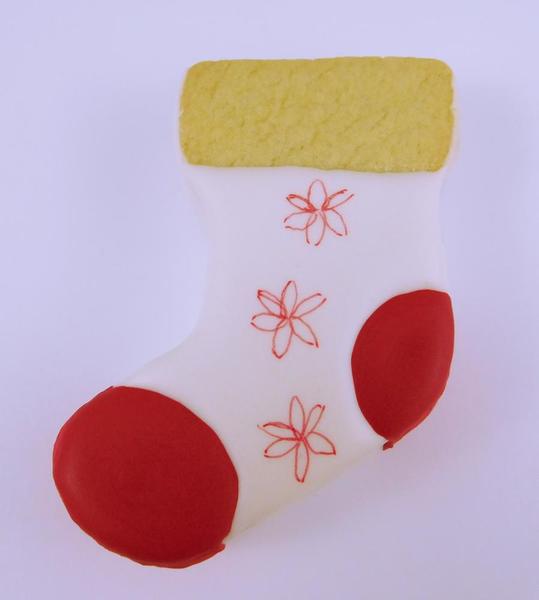
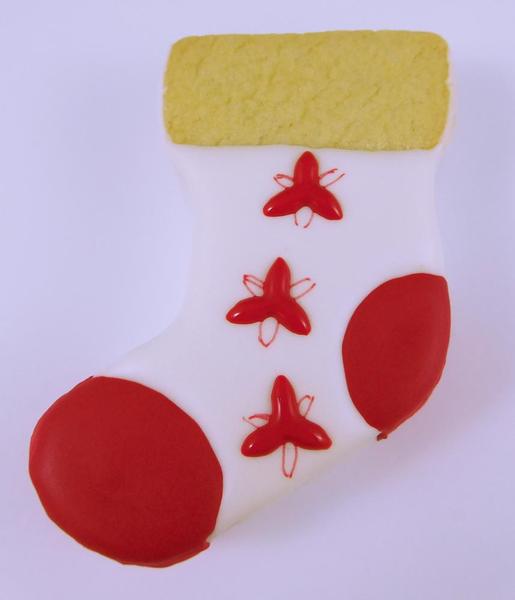
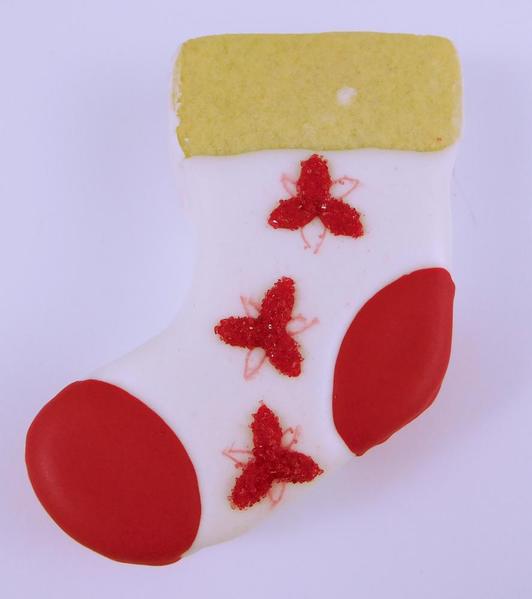
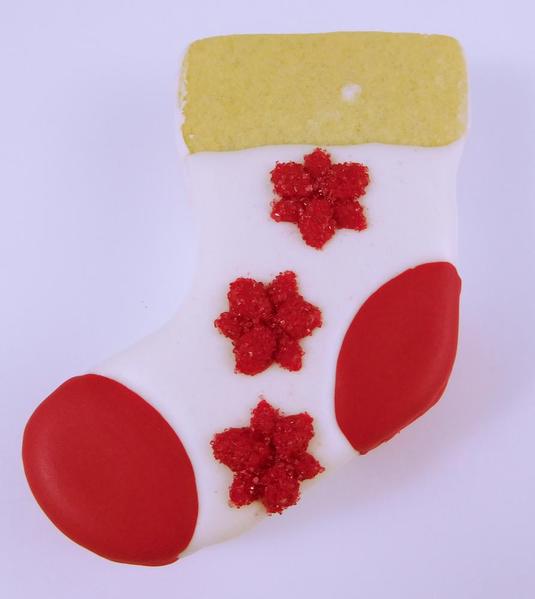



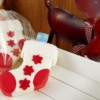
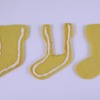
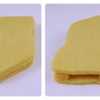

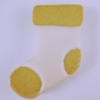

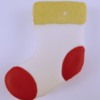




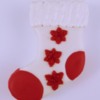



Comments (30)